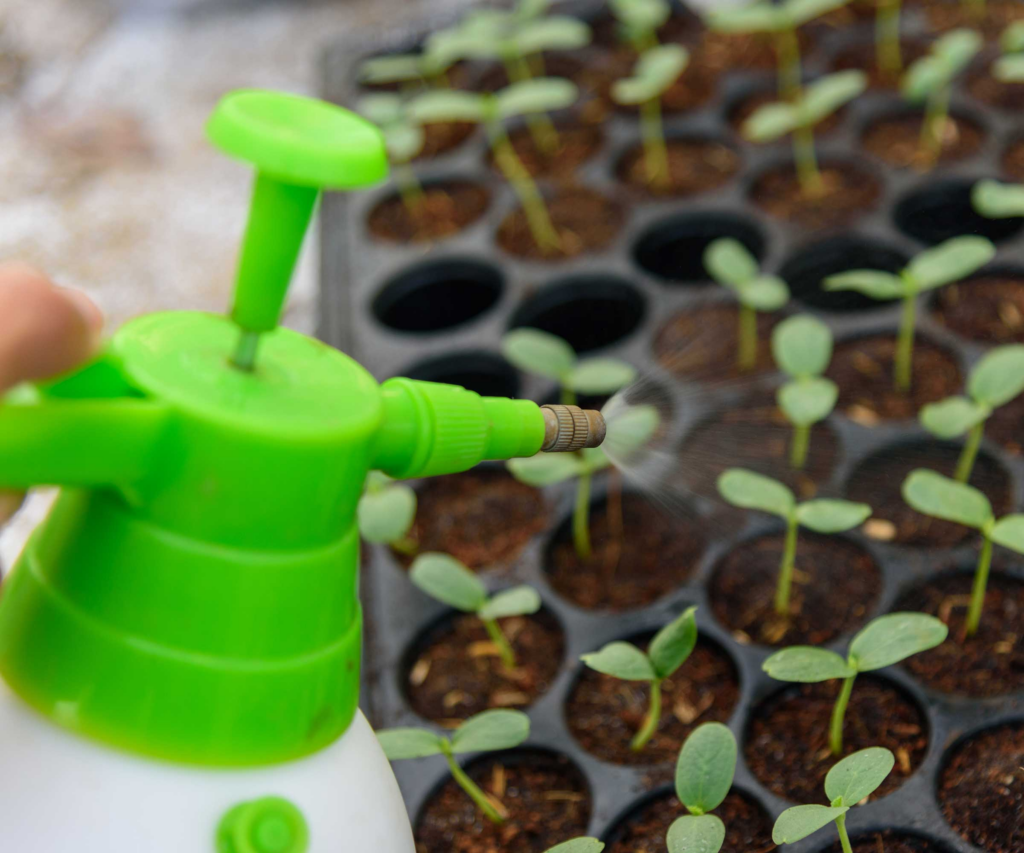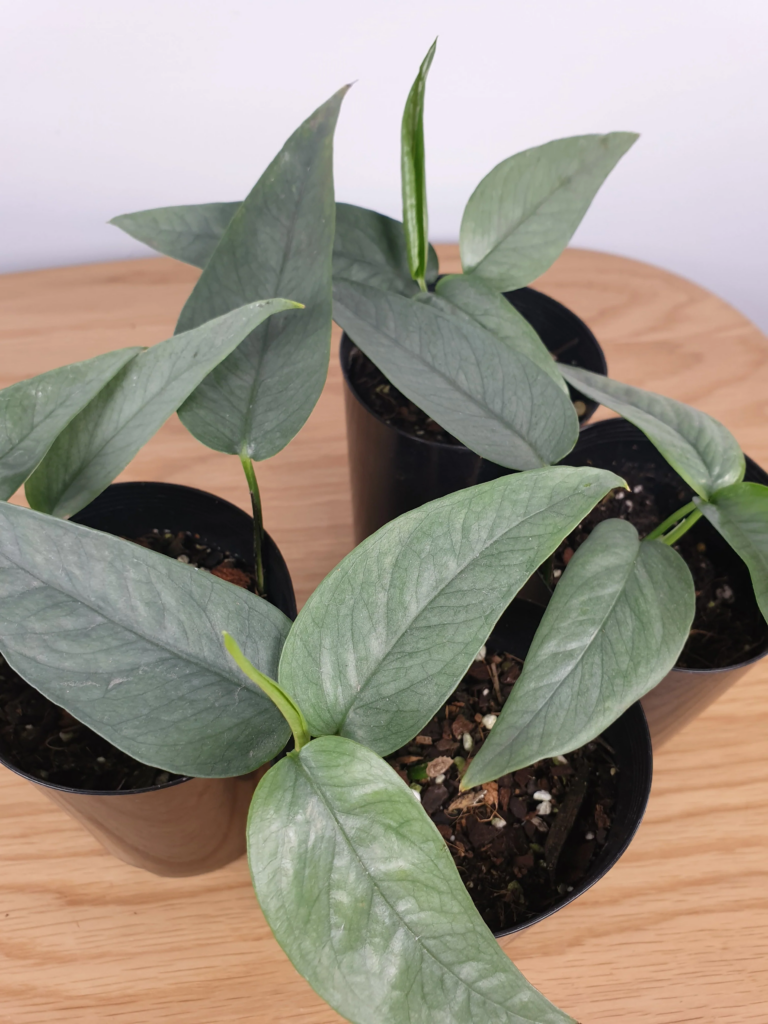How to Grow, Care, and Plant Baltic Blue Pothos- A Complete Guide
Have you ever questioned yourself why you’re spending money to buy a plant that you already have in your garden? Seriously, it’s worth it to question. Why spend money when you can save?
Let me break the ice without creating more suspense. If you have Baltic Blue Pothos, you can easily propagate the plant using the parent plant.
Here, I have not just explained step-by-step ways to propagate Baltic Blue, but also guided you on how to grow and care for them by providing all their growing requirements. Let’s not waste time and learn together.
Baltic Blue Pothos:
The ballotic blue photos plant consists of large, Deep blue-green leaves that change to deeper bluish after maturing. it is also known as Epipremnum Baltic Blue and Costa Farms. For gardeners who want something new and cool to be in their collection then it is the best choice for them. You can grow the pothos plant on the bright tabletop during the initial stage and let the stem grow horizontally. in case if you are growing them in a hanging basket you can allow the stem to trail downside the pot. Don’t worry about how you are growing the plant as the plant is used to adapt easily to the environment which makes them quite versatile.
| Common Name | Baltic Blue Pothos |
| Family: | Araceae |
| Plant Type: | Perennial, vine |
| Hardiness Zones: | 10-12, USDA |
| Sun Exposure: | Partial |
| Soil Type: | Moist but well-drained |
| Soil pH: | 4-5 (acidic) |
| Height: | 10-12 ft. tall (indoors), 20-30 ft. tall (outdoors) |
| Bloom Time: | Spring and summer |
| Flower Color: | Deep Green |
| Native Area: | Asia, Australia |

Grow Baltic Blue Pothos Plant:
Baltic Blue Pothos plants are easy to grow but you need to give them minimal care. they are successful in growing in most parts of the world but they grow best in warm climates. here are some steps for guiding you on how to grow baltic blue Pothos from seeds:
Step 1:
You need to find the seed that is guaranteed to grow the plant but in case if you are not sure you need to look for the seed labeled as true blue.
Step 2:
After getting the seed you need to have a sterile potting soil and fill it with halfway of water keep it as it is overnight so that the soil gets moist enough to absorb moisture from the seed during the process of seed germination.

Step 3:
You can start sprinkling the seed over the top of the wet soil. after which cover it with a light thinner of sand or perlite to help the seed and soil to remain moist. make sure to keep the seed in a warm location where they can get light but it should not be direct sunlight.
Sprinkle the seeds over the top of the wet soil and cover them lightly with a thin layer of sand or perlite (to help keep them moist). Keep them in a warm location where they get light but not direct sunlight.

Step 4:
Make sure to water the seedlings once every week or two to maintain the moisture but don’t soak the seeds wet and don’t let them dry completely.

How to Care for a Baltic Blue Pothos:
After doing the baltic blue photos in your garden it is necessary to take care of the plant and here are some rules that will help your plant to stay healthy and happy:
When it comes to caring for Baltic Blue Pothos, some simple rules will keep your plant healthy and happy. Here’s what you need to know:
Light:
- The plant is used to grow best with plenty of medium to bright indirect light and they can also grow in low light as well according to the conditions.
- Having low light conditions will result in small leaves and dont result in the development of fenestrations.
- The plant gets more prone to leggy growth when it actually gets low light than needed.
- Make sure to keep the plant away from harsh direct light which will result in the burning of leaves.
- Placing the plant in East- or north-facing windows will be the best location for growing plants.
- You can also place with in a west- or south-facing window but make sure they dont get direct sun rays.
Soil:
- While growing the plant you need to choose a soil mix that helps the plant to retain some moisture and is well-draining.
- While for soil mix you can combine equal parts of indoor potting soil and perlite and you can also try to add some orchid bark mix to make them extra chunky and airy.

Water:
- To water the plant let the soil completely dry out between watering.
- In case of missing watering schedule to pothos and the soil gets dry you will notice leaves of pothos dropping which gives an indication that the plant is super thirsty.
- Make sure to give the plant with good drink so that it can bounce back.
- According to me, it’s better to underwater the plants rather than overwater them.
- In case of overwatering or planting in soggy soil conditions, the plant will start to develop root rot.
- You can use a tool for figuring out your watering schedule such as a moisture meter that will help to determine the soil moisture level and when is the time to water the plant.
Temperature and Humidity:
- Baltic blue pothos are able to thrive best in warm temperatures.
- These plants are not cold or frost tolerant and make sure not to keep the plant in temperatures below 55 degrees Fahrenheit.
- Talking about humidity the plant does prefer humid conditions and you need to grow in standard humidity.
- They are used to thrive best when you place them in more humid areas of the home. If you are not able to maintain humidity you can use a small humidifier.
- Avoid the practice of misting the plant rather than using a humidifier or place the plant on top of the pebble tray which is filled with water so that you get enough humidity for plants.
Fertilizer:
- You need to fertilize Baltic blue pothos once a month that too during active growing seasons such as spring and summer which will prompt strong and healthy growth of the plant.
- I suggest you to use balanced liquid fertilizer diluted to half strength to get a successful growing plant.
- Avoid fertilizing the plant during fall and winter months as the plant enters to dormant stage.
Propagating Baltic Blue Pothos:
The Baltic blue pothos can be propagated by rooting stem cutting in water which is an easy way to grow new plants and you can also try growing them by adding new stems to the base of the pot. The best time for propagating the pothos is considered during spring or summer season but you can do that any time. Here are some steps for propagating the Baltic blue pothos.
- You need to take cuttings from a matured Baltic blue pothos plant for that you need to use a pair of sharp, clean pruning shears or scissors.
- You need to use the stem cutting that is at least two or three nodes having the stem but make sure it shouldn’t be more than 5 so that the chances of success increase.
- Make sure to remove one to two leaves from the base of the stem cutting which will expose the node with the stem.
- Now you need to place the cutting in a small container using fresh water in which you can submerge the node in the water and remember that the leaves of the cutting should sit above the top of the water.
- After placing the cutting in the container you need to place the container in a location where it gets medium to bright indirect light.
- You need to refresh the water once a week.
- You will see small white roots growing from the nodes with the stem.
- When the roots grow at least an inch long you need to transfer rooted cutting to soil.
- While transferring the cutting you can add a well-draining mix.
- You need to add rooted cutting in the soil after which pat the soil so that the stem holds them.
- After placing the cutting water the potted stem is cut completely and placed them in a location where it gets bright light.
- During the first week, you need to keep the soil moist which will help the roots to acclimate the soil.
- You can keep the soil of the pothos moist evenly which will help the roots acclimate to the soil.
- You need to allow the soil to dry out completely between watering and then follow the watering routine.

Potting and Repotting Baltic Blue Pothos:
- If you provide the pothos in all the right conditions they will grow fast and quickly. There is a need to repot the baltic blue pothos more than once a year or also need to repot once every two years that does depend on the growth of the plant.
- In case you find that the roots of the plant are growing from the pot drainage holes then it is high time to repot the plant.
- To repot the pothos plant you need to choose a new container that should be at least 1 to 2 inches larger than the past one.
- Make sure to provide the plant with plenty of fresh potting soil.
- The best time for repotting the plant is during the spring or summer season because during this time the plant goes through an active growing season so that the plant gets energy to recover as soon as possible without any disturbance.

Common Pests and Plant Diseases:
- For keeping the baltic blue pothos away from houseplant pests like spider mites, thrips, scale, and mealybugs you need to keep an eye on them.
- The plant is basically not prone to any type of pests.
- In case the plant is already dealing with pest problems it is possible that the pests take on the tropical plant.
- You need to find any signs of fungal issues in stem and root rot because of overwatering.
- Having a bacterial leaf spot on the plant does affect pothos.
- Finding any brownish or yellowish spots with yellow halos you need to remove the infected plants as soon as possible.
- To protect the plant from any pest issue you should not water the plant overhead the plant, always water the plant from the base of it.
Common Problems With Baltic Blue Pothos:
The Baltic blue pothos is generally low-maintenance and is not known for being prone to any particular issues when grown indoors. However, like all plants, there is always the possibility that your pothos may run into a few common problems. Keep an eye out for the following.
Yellow Leaves:
- It is an uncommon situation for baltic blue pothos to grow yellow leaves from one point or another.
- If you find them it can be caused because the plant gives indication of growing condition adjustment.
- Causing yellow leaves can also be because the plant is not getting enough amount of water or light.
- Pothos plants having pests like spider mites and thrips also cause yellowing of leaves.
- If you really find the main causes of yellowing leaves you need to examine the plant’s growing conditions.
- If you find that the plant leaves have started to turn yellow it is better to cut the plant off.
Brown Spots on Leaves:
- Causing of brown spots on leaves are because of underwatering or living in lack of humidity.
- The plant having brown spots on leaves does result from leaf burning.
- You need to make sure that the plant is not placed in a location where it gets intense afternoon sunlight.
- Make sure that the plant is dried out during the watering period.
- Keep the plant away from close to a draft air vent or window that will result in drying out the air of the plant.
- You can also try using the small plant humidifier that will help to increase the humidity of the plant around it.
Leaves Aren’t Fenestrating:
- The Baltic blue pothos plant leaves are not Fenestrating it is because the plant is not receiving enough amount of light.
- Plants getting low light will keep the leaves small to conserve energy.
- I will suggest you move the plant to a brighter location for a couple of months.

Conclusion:
So to thrive Baltic blue Pothos best need is to be provided with water and indirect sunlight so there is not much need to matter about the size of the pot. always make sure to water the plant more during the growing season.
I think this article have taken your interest to plant Baltic blue Pothos to grow them in your garden.


